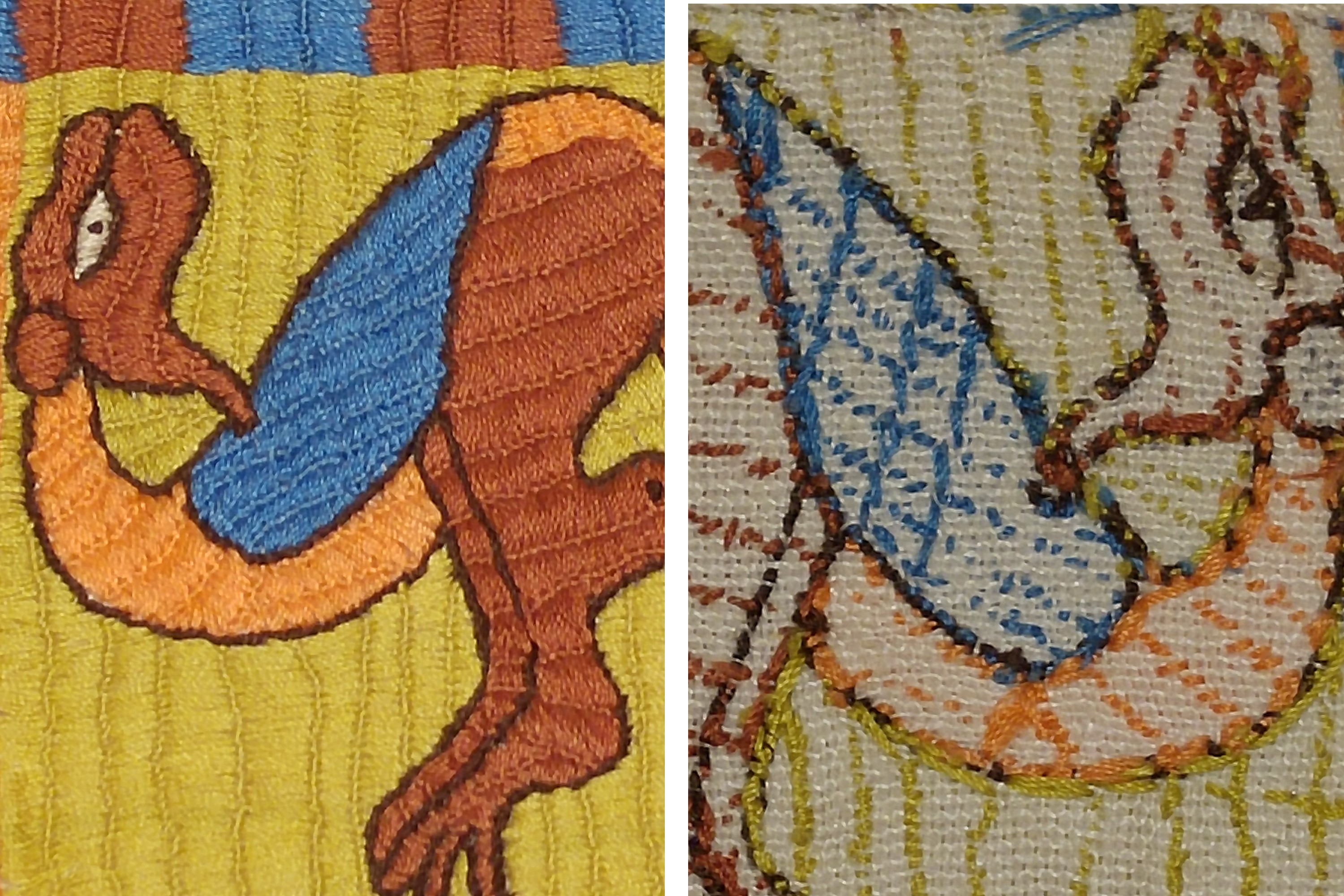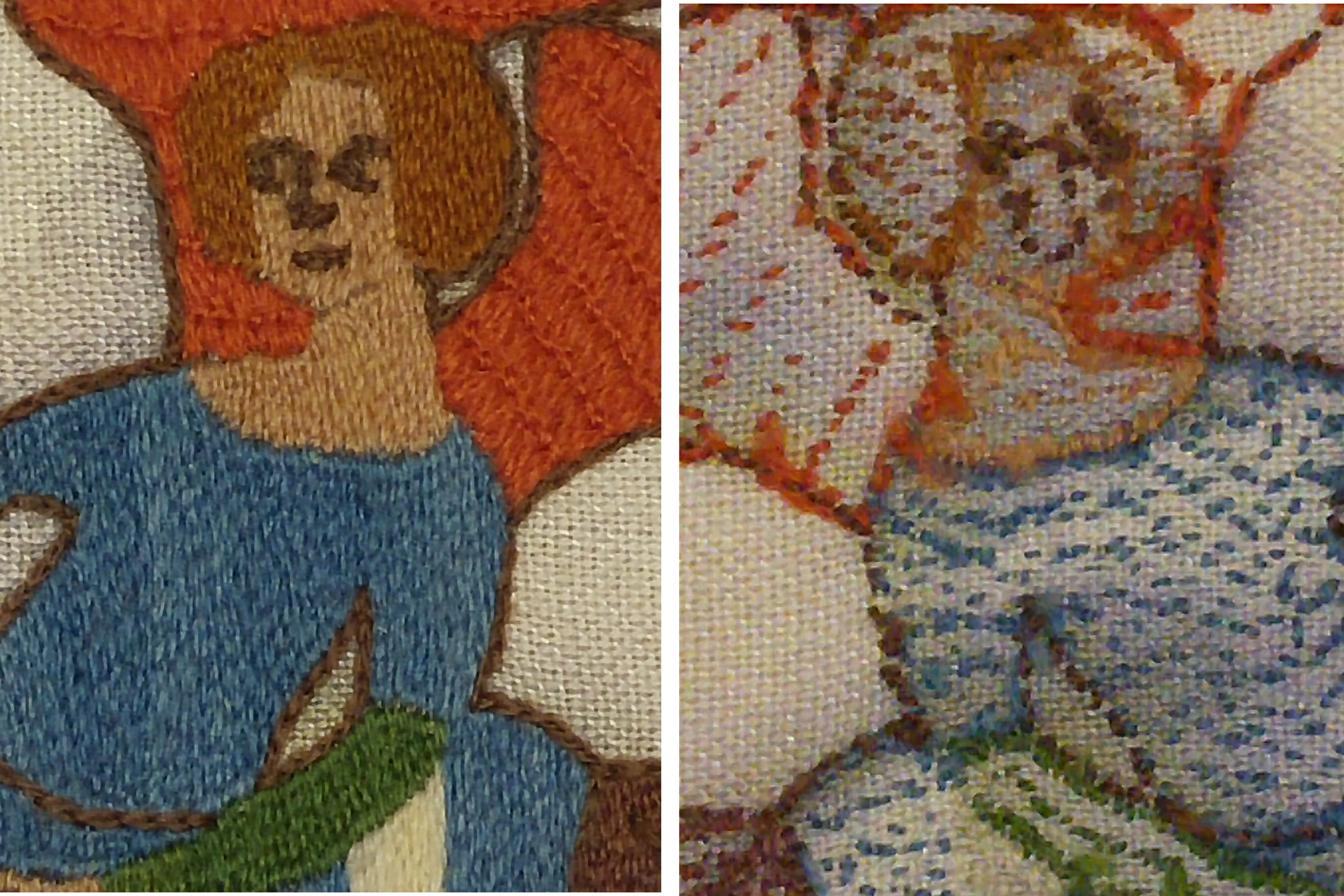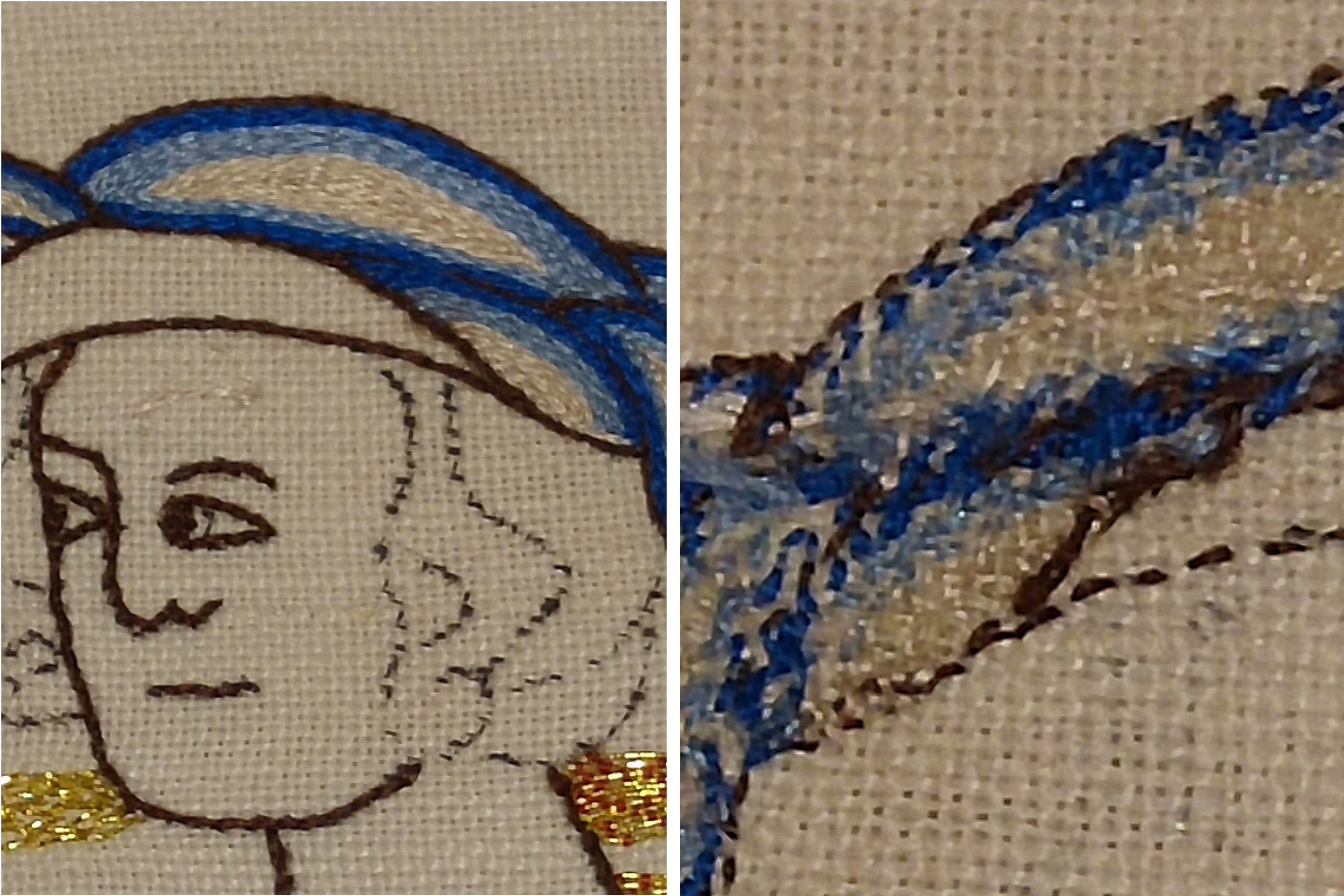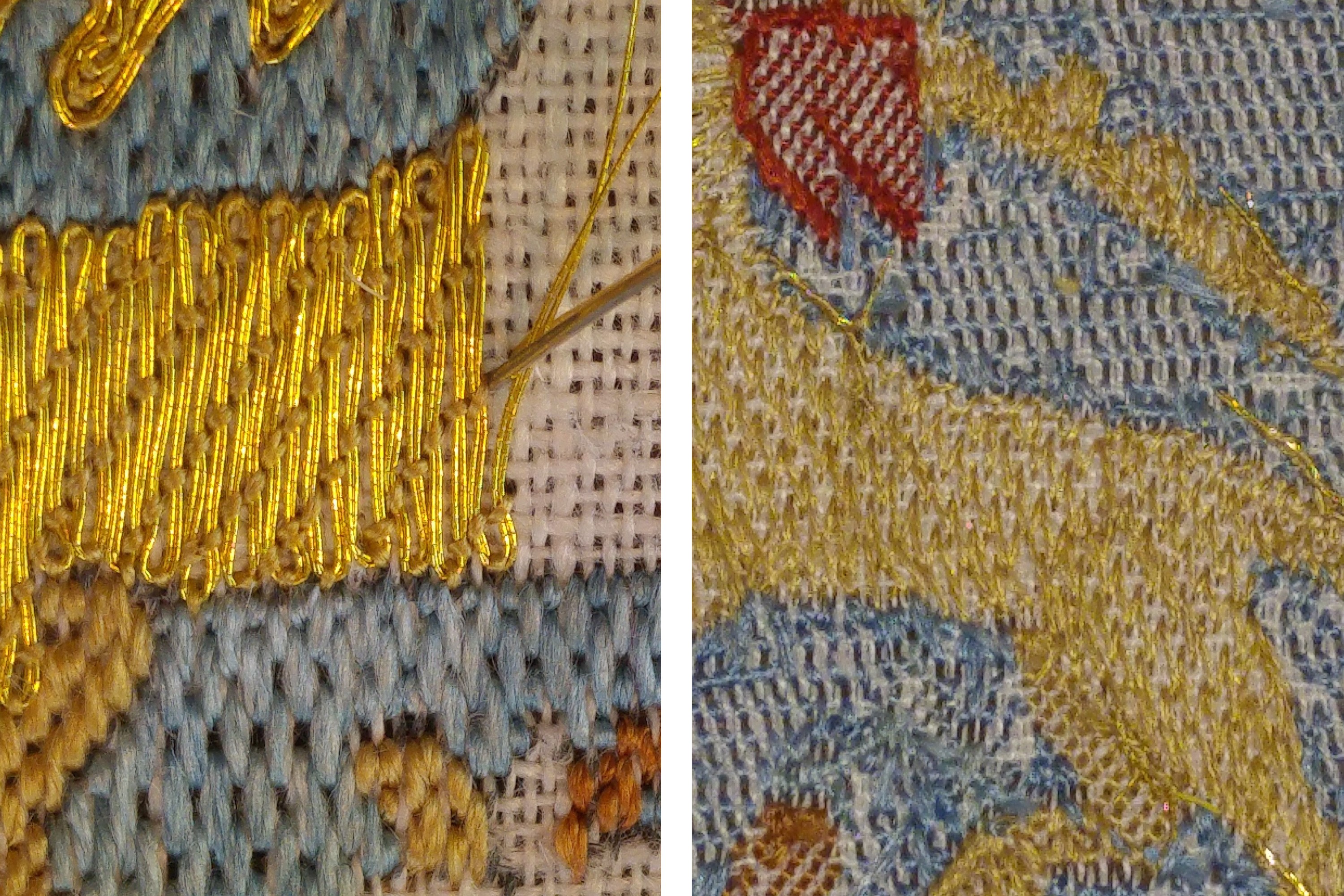Hinter dem Vorhang / backsides of embroideries
Geschrieben in Sticken am 14.02.2017 von Eva-Maria
Auf Wunsch eines Lesers/einer Leserin zeige ich heute einen Teil der Stickerei, der normalerweise verborgen bleibt - die Rückseite. Hier ist je nach Technik mal mehr, mal weniger zu sehen. So gibt es ja einige Stickstiche, die speziell dafür gemacht sind, das Fadenmaterial so sparsam wie möglich und fast ausschließlich auf der Vorderseite zu verwenden. Der Bayeux Stich und der Klosterstich sind hier die besten Beispiele, über die ich bereits einen Artikel geschrieben habe. Andere Techniken haben nahezu den gleichen Fadenverbrauch auf Vorder- und Rückseite. Hier sind der Ziegelstich, der Zopfstich und linienbildende Techniken wie der Stielstich oder der Spaltstich zu nennen. Und damit das Ganze hier nicht nur eine trockene Abhandlung bleibt, gibt es zur visuellen Veranschaulichung auch gleich ein paar Bilder. Viel Spaß!
Following the suggestion of a reader, today I'll deal with an often neglected part of embroidery - the backside. Depending on the embroidery technique used, the backside can be filled with varying amounts of thread. There are some techniques that are specifically designed to hold the thread mainly on the front side, such as Bayeux Stitch and Cloister Stitch on whom I've already written an article here. Other techniques use up the same amount of thread on both sides of the fabric - examples for this are brick stitch, long-armed cross stitch or stem and split stitch. I'll show you some pictures to substantiate what I am talking about. Enjoy!

Bayeux Stitch - on the backside the holding stitches form a line where the threads from the front - that have been laid across the shape at regular intervalls - were couched in place.

Cloister Stitch - as each thread is couched individually, on the backside all that can be seen are the small holding stitches.

Brick Stitch - you can minimize the amount of thread on the backside when you change the working direction after each stitch (work one from bottom to top, the next from top to bottom if the pattern allows). Still, the amount of used thread is rather high.

Split Stitch - filling a form with split stitch requires the same amout of thread on the front and backside.

Surface Couching - the gold thread is only used on the front. The couching thread however covers the whole area on the backside.

